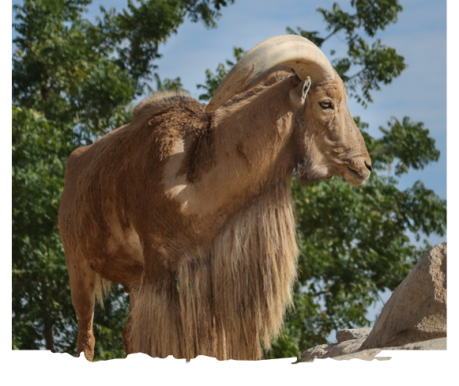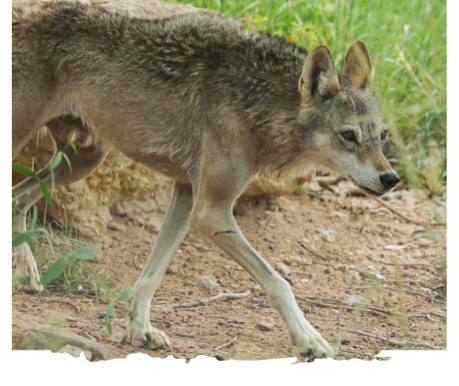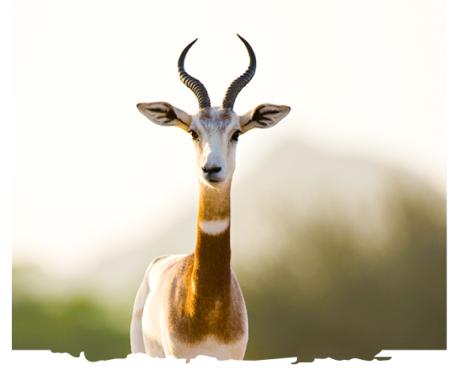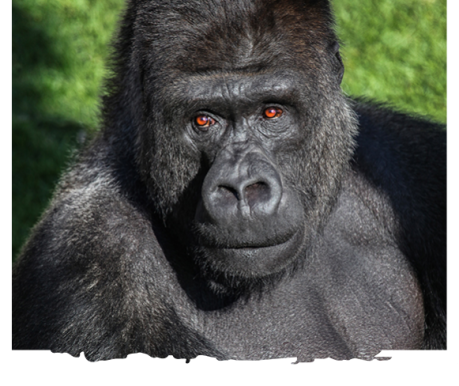Name: Arabian Leopard
Scientific Name: Panthera pardus nimr
Species: P. pardus
Welcome to my home– I am an Arabian leopard, thought to be the smallest known leopard in the world, but I am the largest felines in the Arabian Peninsula. I live on the Arabian Peninsula and in Egypt. When I am fully grown, my weight will be about 24-34 kilograms, and I can reach 203 centimeters in length from my nose to the tip of my tail. I am paler than other leopards, so I can hide and camouflage with the environment.
Arabian leopards are usually solitary animals, and we like to roam alone. We love climbing trees and often keep the remains of our prey up high to snack on throughout the day. Sometimes we can be found lying around, enjoying the sun’s warmth. When adults are ready for breeding, the mothers will look for a boulder or a burrow to give birth to two to four cubs after being pregnant for about three months.
Habitat:
We Arabian leopards prefer to live in areas with vegetation, like mountains and hilly regions that are difficult for human hunters to reach. But this also makes it difficult for experts to study us! We also like to live in places that provide shelter, shade, and a range of animals that we can hunt for food, mainly small animals like desert rodents. Sometimes we hunt for medium-sized animals like antelopes and deer.
Threats:
Unfortunately, Arabian leopards are becoming rare in the wild, and we are on the verge of extinction. Our habitats have been degraded and lost, along with hunting for livestock and the illegal wildlife trade in general. This means we are classified as "Critically Endangered," according to the International Union for Conservation of Nature (IUCN).
Range:
Because we are difficult to see in the wild, our geographic range for living and hunting is not very well known, but we are native to the Arabian Peninsula and most commonly found in Egypt’s Sinai Peninsula, which is mountainous and hilly with open plains, dry desert, and coastal lowlands.
Additional Information:
Interestingly, we were first spotted in the United Arab Emirates in 1949 when a man called Wilfred Thesiger, a well-known British explorer, saw us just up the road at Jebel Hafeet. Sightings of us are still rare due to our endangered status, which is why there are only occasional detections of us these days using sensitive cameras in locations like Wadi Wurayah. Jebel Hafeet and the Al Hajar Mountains are places where we were reported to be seen before the end of the 20th century, but this means that we are in danger of extinction!
The place where most sightings of us happened recently is in the Dhofar Mountains in the southeast of Oman, where 17 adult leopards were counted between 1997 and 2000, but these were recorded using installed camera traps and not seen by humans. Sightings were also reported in the Musandam Peninsula. We were also spotted in Yemen in the western and southern highlands near the border with Oman.
Conservation Action:
Because we are so rare, the CITES Appendix, one of the world’s largest and oldest conservation and sustainable use agreements, lists us in Appendix I, where animals that are close to extinction are listed. It is the highest level of CITES protection. Under the International Union of Conservation of Nature (IUCN), we leopards are on the “red list.”
We are timid animals, so little is known about how we live, where we roam, and how we raise our cubs. Therefore, a detailed study of us is crucial to find ways to manage our protected species. Data, including ecological information, feeding requirements, range, and reproduction, are needed now more than ever for our survival. Preservation sites in the GCC region that best serve Arabian leopards are Jebel Fayfa, Jebel Al-Qahar, and Jebel Shada, all recognized as protected areas, and Jebel Nees, Jebel Wergan, Jebel Radwa, and Harrat Uwayrid.
Education and awareness programs will help develop a strategy of conservation for the Arabian leopards, which is why we are grateful to the Al Ain Zoo for all the help they are giving us in discovering how we can survive better. Conservation workshops and encouraging students to learn more about us can help educate the public and other endangered species. More importantly, communities that live near the protected areas could be highly beneficial to enhancing the survival factors of our fellow Arabian leopards.
To learn more about how you can help us get strong again, come and visit us at Al Ain Zoo and talk to our carers and friendly local guides. See you soon!





